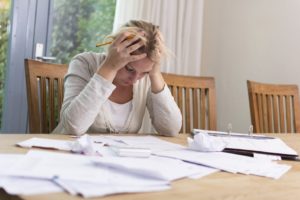 When you file bankruptcy, you must choose which type of bankruptcy you want to pursue. These categories, known as chapters (of the bankruptcy code), each have different rules and different methods for reaching the goal of debt freedom. For those with sufficient regular income who want to keep certain assets, Chapter 13 provides a way to pay back some of your debts and keep those assets.
When you file bankruptcy, you must choose which type of bankruptcy you want to pursue. These categories, known as chapters (of the bankruptcy code), each have different rules and different methods for reaching the goal of debt freedom. For those with sufficient regular income who want to keep certain assets, Chapter 13 provides a way to pay back some of your debts and keep those assets.
To help you understand if Chapter 13 is right for you, here are some answers to common questions about the repayment plan.
What Debts Are Paid Back in Chapter 13?
Unlike Chapter 7, Chapter 13 bankruptcy is not based on selling your assets and discharging the excess owed. Instead, it’s a court-approved payment plan for a certain number of months.
This payment plan must include certain priority debts (such as court-ordered support or back taxes) as well as most or all of the debts against secured assets you want to keep. This is to ensure that creditors receive similar compensation, as they would have if you had been forced to liquidate.
Which lower priority debts — generally unsecured debts (those with no collateral) — are included depends on several factors. These factors include your income, your household expenses, the size of priority debts, and any relief you received in the amount owed on secured debts (a process called cramming down a debt). So, no two Chapter 13 cases will be identical.
How Long Will Your Payment Plan Last?
A Chapter 13 repayment plan generally lasts between 36 months and 60 months. If you have less income than the median income in your area, you may be able to repay for only three years. However, if you have more than the median income, you would use the longer five-year plan.
Because payments are lower for longer repayment periods, some debtors opt for the full five years to ensure they can afford to keep secured assets. On the other hand, some debtors can pay off their unsecured debt in a shorter time once they receive some bankruptcy protections.
How Much Will You Have to Repay Each Month?
The calculation of how much you must pay each month is complicated. The petitioner uses standardized forms to add up all their household income and to take deductions for necessary household expenses such as food and clothing. The amount that remains is known as your disposable income. This is the amount considered available to repay your debts. It is now divvied up among creditors.
Of this disposable income, priority debts are paid first. Then, the amount necessary to fulfill your obligations to secured loans is added in. If anything remains, this would be put toward your unsecured debts. Generally, to qualify for Chapter 13, you must at least be able to pay priority debts and what’s necessary for your secured debts. If your income doesn’t allow this, you would be referred to another chapter.
What Happens When the Repayment Plan Ends?
So, what happens when you have paid for the required 36 or 60 months? The good news is that when your repayment plan is complete, you will have brought your secured loans current again — and perhaps have even paid them off. The remaining amount of unsecured debt is discharged just as it would be in Chapter 7. What happens after completing bankruptcy is basically the same for all chapters.
Where Can You Learn More About Repayment Plans?
Do you think that Chapter 13 bankruptcy could help you keep important assets while getting permanent debt relief? If so, begin by learning more from a bankruptcy attorney in your state. Wiesner & Frackowiak, LC is ready to help. Call today to make an appointment and hear all the options for your situation.
